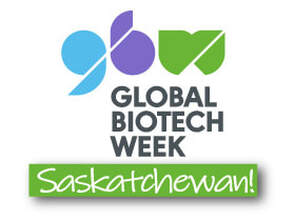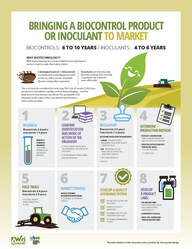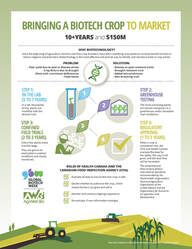The Science of Breadmaking
2023
ABIC Speaker Series
2023
Webinars
2021
|
Presentation by Mike Fata founder, Manitoba Harvest Hemp Foods.
|
Café Sci: Balancing acts for a sustainable food future by Dr. Kate Congreves, Usask
|
Grow your Business with Genomics
presentation by Genome Prairie |
2020
|
Business 101: Startup Bioscience Companies by Brent Zettl, ZYUS Life Sciences.
|
Café Sci: Health and Social Benefits of GMO Crops by Dr. Stuart Smyth, USask
|
|
Startupville Podcasts
|
|
|
|
|
The Biotech Week Edition 2022:
Mehmet Tulbek, Saskatchewan Food Industry Development Centre Heather Deobald, Quantum Genetix Jackie Robin, Ag-West Bio |
The Biotech Week Edition 2021:
Jay Robinson, Ag West Bio and GAAP Conrad Nixon, Back to Your Roots Rob Henderson, Biotalent Canada |
The Biotech Week Edition 2020:
Shawn Ritchie, Med-Life Discoveries Masood Rizvi, NRGene Canada Brent Zettl, Zyus Life Sciences |
Educational material
|
|
Thank you to Lindsey @ Ag in the Classroom, student volunteer Parham Golshenas, and Nutrien Wonderhub and for providing this video on how to make a science poster.
Canadian Light Source science videos
|
Using science to make the best chocolate yet
Scientists used synchrotron technology to show a key ingredient can create the ideal chocolate structure and could revolutionize the chocolate industry. Researchers from the University of Guelph had their first look at the detailed structure of dark chocolate using the Canadian Light Source. Their results were published today in Nature Communications. |
Coding molecules could help with burn victims and oil spills
Imagine if we could control and design molecules as easily as we can run code for a computer. Scientists are working to understand what causes some molecules to assemble on their own. If they can determine what drives this growth, then it could be harnessed for our benefit: from helping to heal burn victims to cleaning up oil spills. It could help revolutionize multiple industries, according to Dr. Michael Rogers, an Associate Professor with the University of Guelph and a Canada Research Chair in Food Nanotechnology. |
Addressing algal blooms and lake toxins
Adam Gillespie, a researcher at the University of Guelph, is using the Canadian Light Source to look at phosphorus chemistry. This research could help with phosphorus-related problems such as algal blooms and toxins in lakes. |
|
The Tractor Dance Study
Soil health is one of the amazing areas of research our scientists use the synchrotron to explore, and University of Guelph's Adam Gillespie has embarked on a completely new way to study and support soil health. He is looking at how tractors compact soil, and how different strategies can alleviate that effect. Compacted soil yields less crop, so this could make a big difference to soil |
CLS Careers:
Gosia Korbas, Senior Scientist and BioXAS Beamline Responsible Did you know that beamline scientists not only support users but in some cases, help build and construct their beamlines? This was the case for Gosia Korbas, Senior Scientist and BioXAS Beamline Responsible. Find out how Gosia ended up working at CLS, how physics can help explain natural phenomenon, and her favourite experiences thus far. |
Surviving the deep freeze
Remote work and global collaboration helps Dr. Peter Davies' research on an anti-freeze protein. The CMCF beamline allows for other protein researchers to continue their work on health related topics such as HIV/AIDS and TB. |




